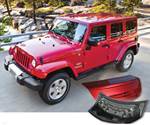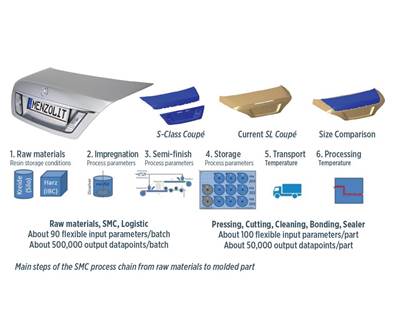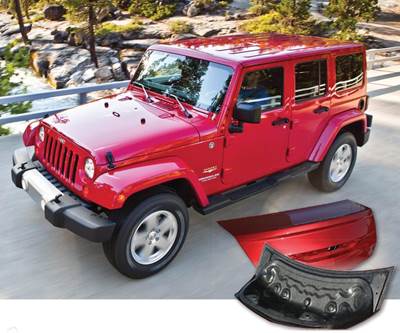Class A composites: A history
Composites have made a lingering and increasingly positive impression in the for exterior automotive body panels.
The first publicized use of fiber-reinforced plastics (FRP) in car body panels was Ford Motor Co.’s (Dearborn, MI, US) 1941 Soybean Car, which used 14 plastic panels on a tubular steel frame, cutting weight to 2,000 lb (907 kg) — 1,000 lb (454 kg) lighter than a steel car. Project manager Lowell Overly said the body material used soybean fiber in a phenolic resin.
Cotton-reinforced plastic, called Duroplast, was used to make bodies for the East German Trabant automobile from 1957 to 1991. The panels, stamped like steel, using presses, reportedly held up well after decades in the sun. At end of life, they were easily recycled, by shredding them into aggregate for cement.
Introduced in 1953, General Motors’ (GM, Detroit, MI, US) Chevrolet Corvette has continuously used composites in its body panels. Molded Fiber Glass Co. (MFG, Ashtabula, OH, US) built the car’s 26 glass fiber/polyester body panels using open-mold chopped spray-up for a 1954 production volume of 10,000 cars/yr. Production was reportedly changed over to wet compression molding in 1968 for the C3 model and, again, to compression-molded sheet molding compound (SMC) in 1973. By 2005, Corvette began using carbon fiber in its C6 and C7 models.
The Corvette fueled the already burgeoning use of FRP in sports cars, and with the introduction of SMC in the early 1960s, an all-out race began. “The 1960s was similar to today in that there was a drive for light weight,” explains Gary Lownsdale, president of Trans Tech International (Loudon, TN, US) and a 50-year veteran of the automotive and composites industries. “But it wasn’t for fuel economy, it was for speed in muscle cars. Chrysler and Ford were racing to see who could get SMC hoods on the vehicles first — the Dart GTS, Plymouth Superbird and Road Runner and numerous other Chrysler/Dodge/Plymouth models for the 440 Six Pack engine all had lift-off SMC hoods.” Meanwhile, Ford was putting out the Ford Shelby GT and other Mustang variants.
Enter plastics
According to Lownsdale, the Fiero actually evolved out of Pontiac’s belated play in the muscle car race. Launched in 1984, with production eventually exceeding 100,000 cars/yr, it was GM’s first vehicle to use non-loadbearing plastic body panels attached to a steel space frame. The Fiero’s doors and fenders were made using reinforced resin injection molding (RRIM) while its hood, roof and decklid were made using SMC. Its rocker panels were unreinforced thermoplastic olefin (TPO).
“Its injection molded polyurethane body played an important role in the development of both thermosets and thermoplastics for Class A exteriors,” says Lownsdale. So, just as SMC was gaining adoptions, injection molding, thermoset polyurethane and thermoplastics entered the market. When used, reinforcements (also commonly called fillers) helped improve modulus, impact strength and dimensional stability, and included milled glass fibers, glass flake (milled or unmilled glass platelets 100 nm to 7μ in diameter), mica, wollastonite and other mineral particulates.
“Many of the thermoplastic body panels adopted on models in the 1980s and 1990s used GTX,” says Lownsdale. GTX was shorthand for GE Plastics’ XENOY — a blend of semi-crystalline polyester (typically polybutylene terephthalate, PBT, or polyethylene terephthalate, PET) and polycarbonate (PC), which is now supplied by SABIC Innovative Plastics (Pittsfield, MA, US). Another option was acrylonitrile-butadiene-styrene and PC (ABS-PC), commonly known by the tradename CYCOLOY (also GE Plastics, now SABIC). Why were these used? “Because they had the highest modulus among injection molded plastics and that’s what we knew how to process,” says Lownsdale. “In 1988, injection molding was still being developed. Software to model and control the process, like MoldFlow, was entirely new. We were still learning.”
Starting production in 1990, GM’s Saturn vehicles followed on from the Fiero, also using a steel space frame and injection molding, but replacing polyurethane with PC/ABS for doors and PC/PBT for the front fenders. Materials for the roof, hood and decklids were listed alternatively as SMC and steel, a trend that was to continue for some time: SMC or steel in horizontal panels and thermoplastics in vertical panels. General Motors used SMC and RRIM in its early 1990s Lumina minivans.
However, plastics had some serious issues to overcome. Thermoplastics were not used in horizontal panels at this time because their creep was too high, causing issues with dimensional stability and part performance. Large coefficients of linear thermal expansion (CLTE) also caused problems. Parts would expand with heat and shrink with cooling, which caused complications with fit and interference. For example, plastic panels on Saturn vehicles would swell so much that the doors wouldn’t open. Designers had to enlarge the gaps between doors and other body panels, which was not desirable and one reason why GM eventually switched back to a metal body. “That’s been overcome now,” says Lownsdale. “We’ve learned a lot more about CLTE.”
Degradation from the sun’s ultraviolet (UV) radiation was another issue. “Thermoplastics typically didn’t have enough UV resistance to prevent color fade in 10-year paint durability tests,” Lownsdale recalls. “Now we have additives that overcome this.”
The rise of SMC
By 1995, a supplement in WARD’s Auto World magazine titled, “SMC: lowest cost solution to saving weight,” listed SMC applications that included the 1994 Mustang hood and rear-quarter scoops (200,000 cars/yr); more than 40% of exterior panels on GM F-bodies (e.g., Pontiac Firebird, Chevy Camaro) at >200,000 cars/yr; and the 1995 Ford Windstar minivan hood, cowl-top vent and track cover at ≈300,000 units/yr. It estimated that better than 300 SMC components were used on more than 110 vehicles by 28 manufacturers. Hoods reportedly comprised >25% of SMC consumption, followed by other horizontal exterior panels and then non-Class A applications. By 2000, Ford was using 50,000 MT of SMC per year in hoods, fenders and decklids, making it the largest consumer in North America. By 2006, the Automotive Composites Alliance reported 123,000 MT of SMC used in North American cars and heavy trucks, while DSM Composite Resins (now Aliancys AG, Schauffhausen, Switzerland) tallied European consumption at 100,000 MT.
Overcoming paint pops
As the adoption and use of SMC on high-volume models rapidly increased — and likely as a direct result of it — SMC parts experienced a plague of paint defects. “When I started in 1999, Class A applications of SMC had serious issues with edge pops or paint pops,” says Mike Siwajek, director of R&D at Continental Structural Plastics (Auburn Hills, MI, US). “We were seeing 250-350 concerns per 1,000 parts, which was unacceptable,” he recalls. His group, then a part of ThyssenKrupp Budd, later bought out by CSP, began cataloguing the defective parts and doing root cause analyses, tracing 90% of the defects to microcracks in the laminates. Siwajek explains, “We were molding the SMC parts and shipping them to the assembly line, where the guys would treat them like steel parts, dropping them, using mallets as they attached them to the BIW, etc. During painting, the paint film would cover the microcracked area, trapping air, which would then expand during cycling in the paint oven, causing ‘fish eyes’ all along the edges of the part.”
Siwajek’s team members knew they couldn’t correct the rough handling in the manufacturing plants, so they contacted resin supplier AOC (Collierville, TN, US) and worked on increasing toughness in the polyester matrix. Both ThyssenKrupp Budd and AOC hold patents on the resulting tough Class A (TCA) technology for SMC. “By the end of 2002, Ford had stopped counting SMC paint defects because we had basically eliminated the issue,” says Siwajek. “However, by that time we had already missed the new model cycle.” (For more background on the correctives applied to early production paint defects issues, see “SMC 4.0.” here.)
He continues, “When CSP bought us in 2006, though we had always been on the Corvette, we were just getting back onto other models when the industry moved to lightweighting.” At that time, the TCA product had a specific gravity (SG) of 1.9, but the company had already been working to reduce weight, having introduced the mid-density 1.6 SG product which went on the C6 Corvette. “So we jumped to the TCA UltraLite at 1.2 SG,” says Siwajek, “which is on the C7 Corvette.”
Carbon fiber
A number of other factors were changing the automotive Class A market in the late 1990s. Unibody construction was making a comeback, which initially favored metals. Unitized body construction, as opposed to body-on-frame, unites the body, floor and chassis to form a single structure. The lightest form, monocoque construction, had long been favored in racing, and though unibody is more of a semi-monocoque, it still offered advantages in weight and crash protection, two key trends.
Corporate average fuel economy (CAFE) standards in the US had helped boost the first wave of plastic and SMC bodies. Established in 1975, CAFE aimed to roughly double the average fuel economy of the new car fleet to 27.5 mpg by the 1985 model year (MY). By the late 1990s, both the insurance industry and consumers began taking crash test results more seriously and Volvo had introduced the world's first car with side airbags. Thus, the auto industry began looking at how to approach body panels structurally, making them more crash-resistant, yet reduce their weight.
In fact, automakers began looking at modularization in many areas, and this is when plastics started using higher percentages of fiber and longer fibers — including glass mat thermoplastic (GMT) and long fiber thermoplastics (LFT) — and moved into the auto interior via integrated modules for instrument panels, door panels and floor systems.
Lownsdale recalls, “Even as SMC was taking off in the 1990s, already resin transfer molding (RTM) was being explored as an alternative. The first-generation Dodge Viper, for example, used a large RTM press to make many of its exterior panels.” He notes these would have been SMC if RTM hadn’t been used.
McLaren had started using carbon fiber-reinforced plastic (CFRP) monocoques in Formula 1 race cars in 1981, and by the 1990s, a variety of low-volume supercars were using CFRP extensively. According to Lownsdale, CF suppliers such as Hercules (Wilmington, DE, US) and Toray Industries Inc. (Tokyo, Japan) had been pushing their products into the auto industry for some time, but then Boeing started production of the 777 aircraft’s massive CFRP empennage. Hercules and Toray pulled out of the automotive market and committed to supplying only the aerospace market.
“This left a very bad taste in the mouth of GM, especially,” Lownsdale recalls, noting that GM had a production CFRP driveshaft on its pickup trucks and, thus, was left without a fiber supply. “We should have had CFRP in cars by 2000, but this exit by the CF producers pushed us back into a sort of Dark Ages.”
Since then, however, the combination of CAFE standards for 2020 and 2050, the European Union requirements for reduced CO2 emissions and the rapid increase in electric/hybrid powertrains have driven OEMs back to carbon fiber in order to jettison weight. Carbon fiber manufacturers, for their part, have vastly increased the supply of fiber, mitigating previous concerns about abrupt interruptions in their ability to meet demand. Further, suppliers of commercial-grade carbon fiber have entered the marketplace, providing a fiber source unlikely to be siphoned off by demanding aerospace clients. And research continues along several avenues toward a much more affordable, industrial-grade carbon fiber suitable for use in automotive applications.
This article is a Side Story to a feature article titled, "Composites in Class A body panels: Evolution continues."
Related Content
Bio-based acrylonitrile for carbon fiber manufacture
The quest for a sustainable source of acrylonitrile for carbon fiber manufacture has made the leap from the lab to the market.
Read MoreThe potential for thermoplastic composite nacelles
Collins Aerospace draws on global team, decades of experience to demonstrate large, curved AFP and welded structures for the next generation of aircraft.
Read MoreNatural fiber composites: Growing to fit sustainability needs
Led by global and industry-wide sustainability goals, commercial interest in flax and hemp fiber-reinforced composites grows into higher-performance, higher-volume applications.
Read MoreInfinite Composites: Type V tanks for space, hydrogen, automotive and more
After a decade of proving its linerless, weight-saving composite tanks with NASA and more than 30 aerospace companies, this CryoSphere pioneer is scaling for growth in commercial space and sustainable transportation on Earth.
Read MoreRead Next
SMC 4.0
The story behind the supplier-orchestrated effort that eliminated unacceptable defects levels in painted Class A SMC exterior auto parts.
Read MoreComposites in Class A body panels: Evolution continues
Low-density SMCs lead the way as fiber-reinforced polymers make headway in auto components that must please the eye.
Read MorePlant tour: Daher Shap’in TechCenter and composites production plant, Saint-Aignan-de-Grandlieu, France
Co-located R&D and production advance OOA thermosets, thermoplastics, welding, recycling and digital technologies for faster processing and certification of lighter, more sustainable composites.
Read More













.jpg;maxWidth=300;quality=90)













